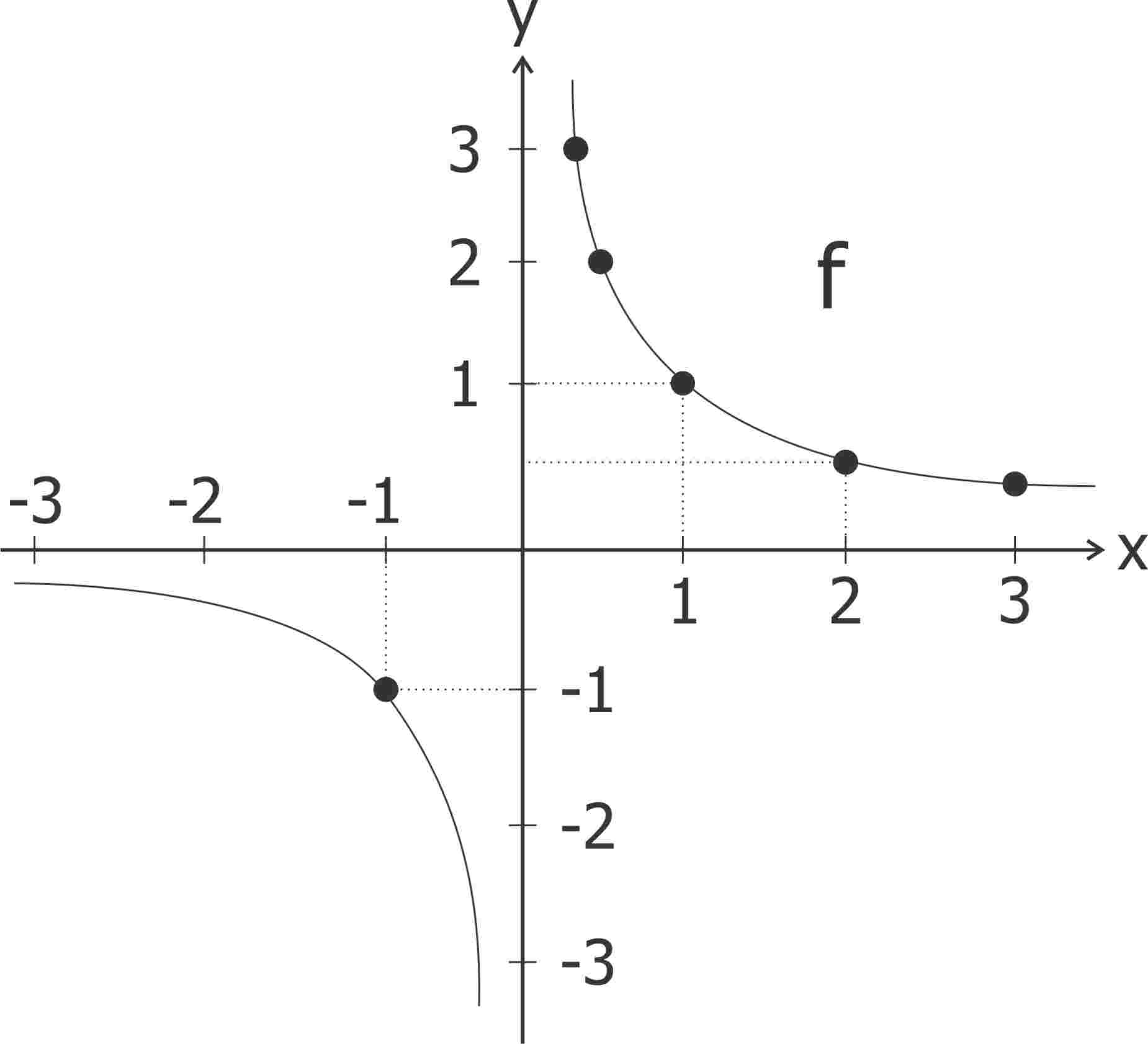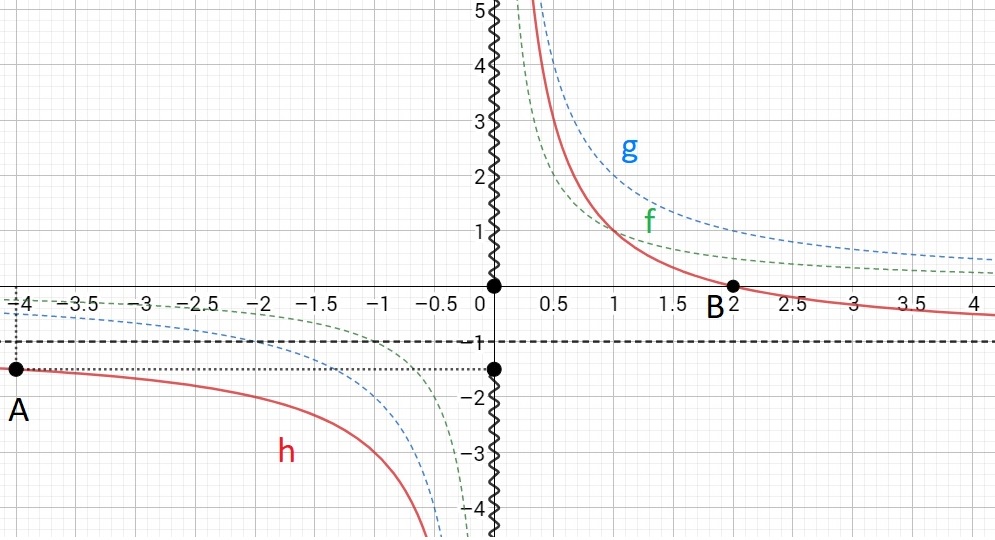Renata escolhe aleatoriamente um número real de – 4 a 2 e diferente de zero, denotando-o por x. Na reta real, o intervalo numérico que necessariamente contém o número é
Considere a função  de lei
de lei  . Seu gráfico é exibido a seguir:
. Seu gráfico é exibido a seguir:

O gráfico de função de lei  é obtido duplicando-se as ordenadas dos pontos do gráfico anterior. Por fim, o gráfico da função de lei
é obtido duplicando-se as ordenadas dos pontos do gráfico anterior. Por fim, o gráfico da função de lei  é obtido subtraindo-se 1 das ordenadas dos pontos do gráfico de g. Veja a figura a seguir:
é obtido subtraindo-se 1 das ordenadas dos pontos do gráfico de g. Veja a figura a seguir:

Note que a lei  pode ser reescrita como
pode ser reescrita como  , assim, os valores assumidos pela função h quando x varia de –4 a 2 (com x ≠ 0), que estão destacados no eixo das ordenadas da figura anterior, representam o conjunto buscado:
, assim, os valores assumidos pela função h quando x varia de –4 a 2 (com x ≠ 0), que estão destacados no eixo das ordenadas da figura anterior, representam o conjunto buscado: ![«math style=¨font-family:Tahoma¨ xmlns=¨http://www.w3.org/1998/Math/MathML¨»«mstyle mathsize=¨14px¨»«mrow»«mo»]«/mo»«mo»§#xA0;«/mo»«mo»§#x2013;«/mo»«mo»§#x221E;«/mo»«mo»,«/mo»«mo»§#xA0;«/mo»«mo»§#x2013;«/mo»«mfrac»«mn»3«/mn»«mn»2«/mn»«/mfrac»«mo»§#xA0;«/mo»«mo»]«/mo»«mo»§#xA0;«/mo»«mo»§#x222A;«/mo»«mo»§#xA0;«/mo»«mo»[«/mo»«mo»§#xA0;«/mo»«mn»0«/mn»«mo»,«/mo»«mo»§#xA0;«/mo»«mo»+«/mo»«mo»§#x221E;«/mo»«mo»§#xA0;«/mo»«mo»[«/mo»«/mrow»«/mstyle»«/math»](https://anglo.plurall.net/sites/all/libraries/ckeditor//plugins/ckeditor_wiris/integration/showimage.php?formula=b0daeca6124ad13f828a2a018e0566ee.png) .
.
Observação: o conjunto encontrado não se trata de um intervalo, como mencionado no enunciado, e sim de uma união de intervalos.